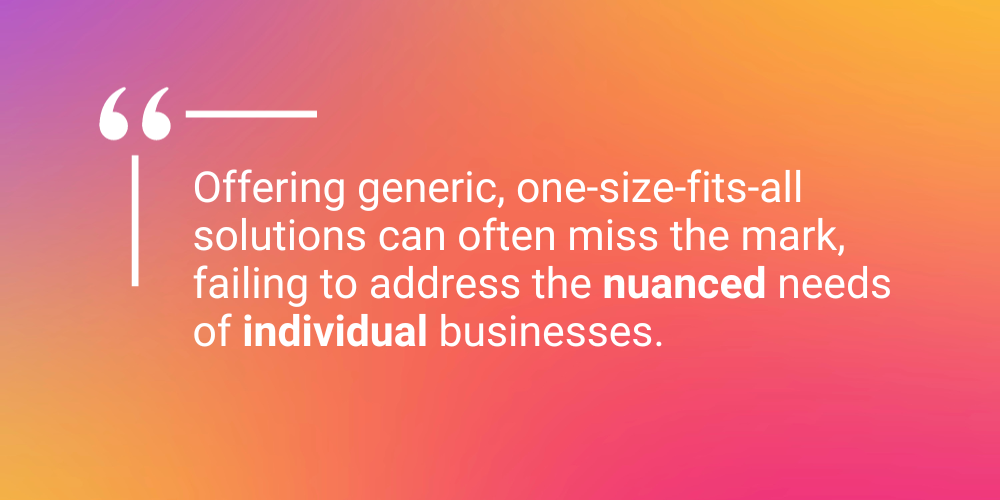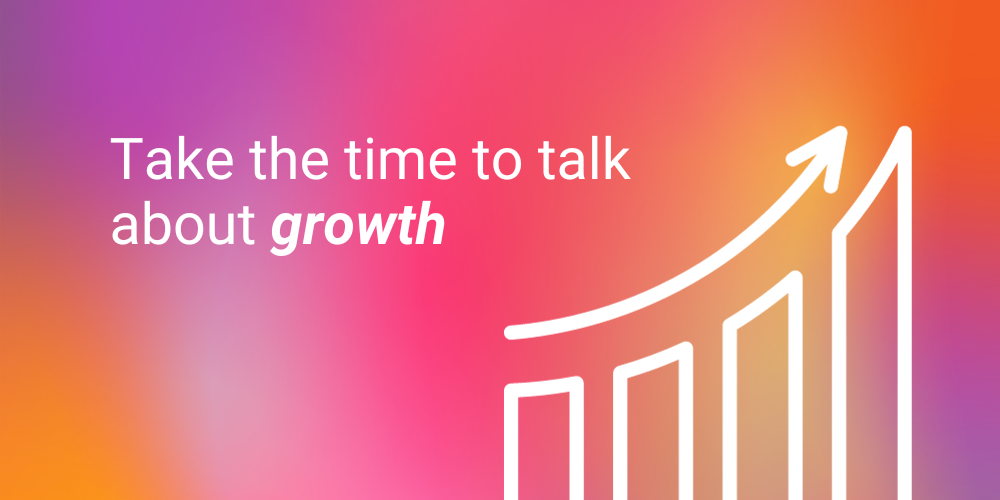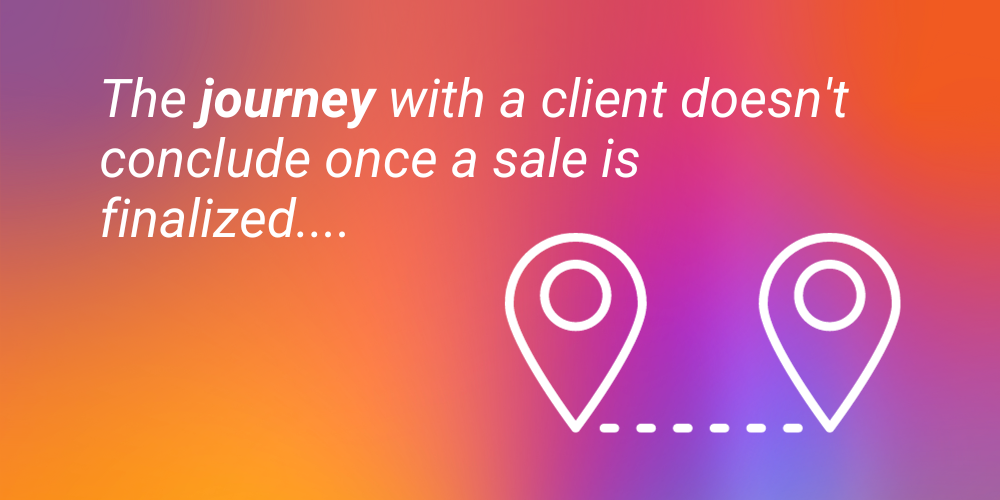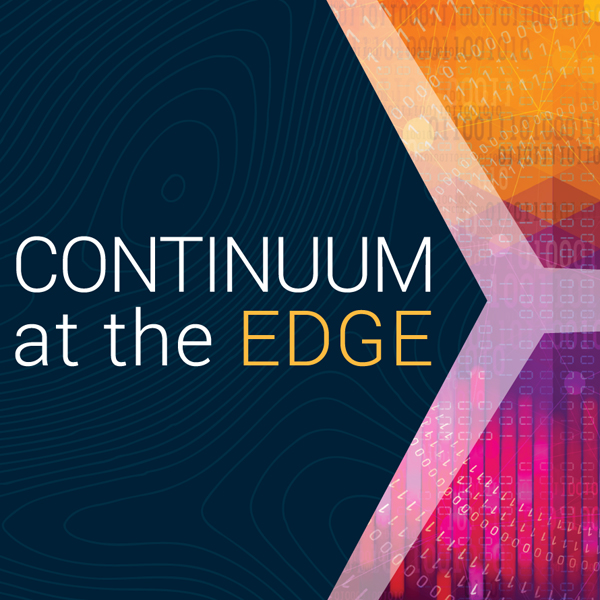#10: Match the Language to the Audience
One size never fits all, especially when communicating with multiple stakeholders that have different priorities, expectations, & levels of understanding.

When engaging with engineers or architects, diving deep into technical jargon and specifications might be both expected and appreciated. This group thrives on precision and detail. However, this level of detail has a tendency of diluting the solution’s overall value when addressing managers, VPs, or C-level executives.
These stakeholders are typically more invested in understanding the broader impact, ROI, and strategic alignment of a solution. The key is to discerningly adjust your linguistic approach, ensuring the essence of your message aligns perfectly with the priorities and knowledge base of your audience.
#9: Set Realistic Expectations
In the world of business, setting the right expectations is the cornerstone of trust. Whether it’s committing to deliverables, forecasting results, or predicting the impact of a solution, over-promising can quickly tarnish credibility and strain relationships. It’s imperative to provide stakeholders with an accurate picture of what can be achieved, even if it might not always align with their ideal scenario. By being transparent from the outset, you not only mitigate potential disappointments and challenges down the road but also foster an environment of trust and integrity. Remember, consistently meeting or exceeding realistic expectations often proves more valuable than sporadically achieving lofty, uncertain goals.
#8: Tailor Solutions to the Client

Every client is unique, with distinct challenges, goals, and operational landscapes. Offering generic, one-size-fits-all solutions can often miss the mark, failing to address the nuanced needs of individual businesses. Instead, taking the time to understand a client’s specific requirements,
industry dynamics, and organizational culture allows for the crafting of bespoke solutions that resonate more deeply. By tailoring offerings to fit the client’s context, you not only demonstrate a profound understanding of their business but also position your solution as an integral component of their success. This personalized approach often translates into stronger partnerships, higher satisfaction rates, and sustained business growth.
#7: Provide a Competitive Analysis
In an ever-evolving market landscape, understanding where your solution stands in relation to competitors is crucial. By offering a competitive analysis, you illuminate the unique value propositions and differentiators that set your offering apart. This not only instills confidence in potential clients but also empowers them with the knowledge to make informed decisions. An effective analysis doesn’t just highlight the strengths of your solution, but also addresses potential gaps or weaknesses, ensuring transparency and trust. By framing your solution within the broader market context, you demonstrate thorough industry understanding and position your offering as a well-considered choice in a sea of alternatives.
#6: Prioritize User Experience
In the digital age, functionality alone no longer determines the success of a product or solution. User experience (UX) has emerged as a critical factor, often being the bridge between a product’s capabilities and its real-world adoption. Prioritizing UX ensures that while the solution might be technically sound, it’s also intuitive, accessible, and engaging for end-users. A seamless user experience can drive user satisfaction, promote consistent usage, and foster brand loyalty. When a solution aligns with the natural workflows and preferences of its users, it ceases to be just a tool and becomes an integral part of their daily operations, leading to sustained success and impactful results.
#5: Always Highlight ROI and TCO

For decision-makers and stakeholders, the financial dimensions of a solution often take center stage. The Return on Investment (ROI) and Total Cost of Ownership (TCO) are pivotal metrics that elucidate the economic viability of any technology or initiative. By consistently emphasizing ROI, you spotlight the tangible value and benefits a solution can yield over time. Meanwhile, outlining TCO provides a comprehensive view of the financial commitment involved, encapsulating not just the acquisition cost, but maintenance, training, and any other associated expenses. Together, these metrics offer a holistic financial perspective, empowering stakeholders with the clarity to make strategic and informed investment decisions.
#4: Address Security and Compliance Proactively
In today’s digital-centric business environment, concerns over data breaches, privacy infringements, and regulatory violations have never been more pronounced. Rather than treating security and compliance as afterthoughts or mere checkboxes, businesses must prioritize and embed them within the core of their solutions. By proactively addressing these concerns, you not only fortify your offering against potential vulnerabilities but also foster trust among stakeholders. Demonstrating a comprehensive understanding of industry-specific regulations and showcasing built-in security measures can alleviate apprehensions and position your solution as both robust and compliant. In a world where trust is paramount, a proactive stance on security and compliance can be a significant differentiator.
#3: Effectively Communicate the Solution’s Value Proposition(s)
In a market saturated with innovations and offerings, merely having a stellar solution is not enough; its unique value must be coherently communicated. Articulating the value proposition goes beyond listing features—it delves into the tangible benefits, outcomes, and advantages that stakeholders can anticipate. This requires translating technical capabilities into impactful business outcomes, answering the quintessential question: “Why should this matter to me?” By effectively communicating the solution’s value propositions, you bridge the gap between what a product does and why it’s indispensable, allowing potential clients to visualize its transformative potential for their specific challenges and goals.
#2: Emphasize Post-Sales Support

The journey with a client doesn’t conclude once a sale is finalized; in fact, the post-sales phase often defines the longevity and depth of the relationship. Emphasizing post-sales support underscores a commitment to the client’s long-term success and ensures they extract the maximum value from their investment.
This support can manifest in various forms—be it regular check-ins, training sessions, or troubleshooting assistance. By championing robust post-sales support, businesses communicate that they’re not just invested in the transaction, but in the ongoing success and satisfaction of their clients. In an era where customer loyalty is gold, such an emphasis can significantly differentiate a brand and foster enduring partnerships.
#1: Foster Ongoing Communication
Building a strong business relationship transcends the boundaries of one-time interactions and requires consistent, transparent communication. Keeping channels open and active signifies a dedication to understanding evolving needs, addressing concerns, and adapting to changes. This continuous dialogue not only helps in preempting potential issues but also demonstrates a genuine interest in the client’s growth and success. In a landscape where clients seek more than just vendors, they look for partners, fostering ongoing communication becomes a cornerstone of trust, mutual understanding, and collaborative progress. It’s a testament to the commitment that stretches beyond mere transactions and dives deep into relationship-building.


There's more to discover!
You can gain access to more helpful resources just like this by subscribing to our Linkedin Newsletter, “Continuum at The Edge”. Our monthly newsletter provides the latest digital transformation news, noteworthy content, and events happening at the edge of tech. By joining our subscriber community, not only will you unlock additional articles, but you have the ability to join in on insightful and eye-opening conversations with our audience.

There's more to discover!
You can gain access to more helpful resources just like this by subscribing to our Linkedin Newsletter, “Continuum at The Edge”. Our monthly newsletter provides the latest digital transformation news, noteworthy content, and events happening at the edge of tech. By joining our subscriber community, not only will you unlock additional articles, but you have the ability to join in on insightful and eye-opening conversations with our audience.

